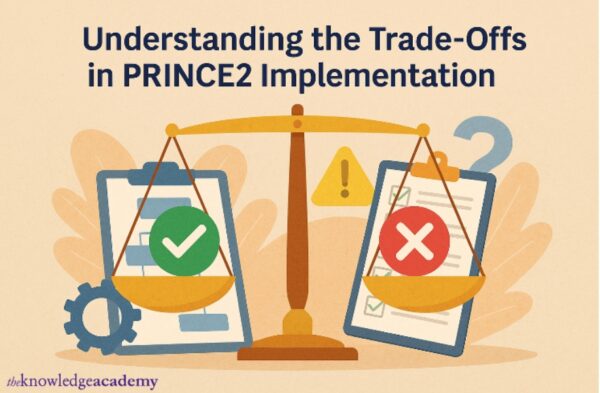
Is structure always the answer to project chaos, or can too much of it slow you down? That is the tricky balance many UK organisations face when adopting project frameworks. While the PRINCE2® Foundation and Practitioner pathway equips professionals with solid grounding, the real challenge lies in applying that knowledge in real-world scenarios.
Some teams thrive under its clear roles and processes. Others find it restrictive. Exploring the PRINCE2 Methodology Advantages and Disadvantages is not just about theory; it is about how your team works, thinks, and delivers. Let us look at the key factors you will need to consider before making the switch.
Table of Contents
- What You Need to Consider Before Using PRINCE2
- Conclusion
What You Need to Consider Before Using PRINCE2
Implementing PRINCE2 is more than just following steps in a manual. It comes with real-world implications that can affect time, cost, culture, and clarity. Here is what you need to weigh up before fully adopting the methodology:
Balancing Standardisation with Flexibility
PRINCE2 brings consistency. Everyone on the team speaks the same language, follows the same stages, and follows a set process. This is quite helpful when you have to manage projects across departments or teams.
However, the flip side is reduced flexibility. The way PRINCE2 is set up could make it hard for smaller or more agile teams to work together. Focussing on set stages and responsibilities can make it harder to change direction rapidly sometimes. While the methodology is designed to be tailored, applying that customisation without losing control requires skill and experience.
Understanding the Cost of PRINCE2 Implementation
When you plan your PRINCE2 budget, you need to think about more than simply the cost of getting certified. There are a lot of various fees that come with putting something into action. Project managers and team members need to get certified to make sure that they use PRINCE2 correctly. These training sessions are crucial, but they can cost a lot of money, especially for huge teams.
In many circumstances, companies may need to purchase new tools or modify their existing systems to implement PRINCE2 methods. For example, the structure of the framework can require changes to project management software. These additional changes may not be immediately visible but can significantly affect the overall implementation budget.
Juggling Training Needs with Project Deadlines
Teaching your employees how to use this strategy can make them more skilled and consistent, but it will take time. The PRINCE2 learning curve might be steep for teams who are not used to organised methods. From understanding terminology to adapting to stage boundaries, the time taken to become confident in the approach may delay the start of actual project work.
During the initial stages of PRINCE2 adoption, it is not unusual for productivity to drop. Staff may take longer to do their work while they refer new rules or wait for decisions to be made in formal governance structures.
Aligning PRINCE2 with Organisational Culture
PRINCE2 requires a certain amount of discipline, paperwork, and clear roles, which may not work in every organisation. In creative or flat businesses, giving people formal responsibilities like Project Manager, Project Assurance, and Team Manager might not go over well. People are used to working collaboratively and informally. Introducing rigid roles may be seen as restrictive rather than supportive.
Organisations with low project management maturity may find PRINCE2 difficult to absorb fully. Without a solid foundation in basic project principles, teams may struggle to see the relevance of product-based planning or risk logs. It becomes essential to assess readiness before diving in.
Managing Documentation in PRINCE2 Projects
One of the strengths of PRINCE2 is its emphasis on documentation. It encourages teams to create and maintain artefacts such as the Business Case, Project Plan, and Product Descriptions. These offer transparency and control. However, too much documentation can become a burden.
For every project stage, there are required reports and registers. If not managed well, these can create paperwork overload and slow decision-making. Smaller teams may find themselves spending more time documenting than doing.
Conclusion
PRINCE2 can transform how projects are delivered by offering structure, clarity, and control. However, successful implementation involves more than just following a manual. It means accepting the trade-offs and managing them wisely. Consider The Knowledge Academy courses for improving your project management skills and learning how to adapt PRINCE2 confidently to your environment.